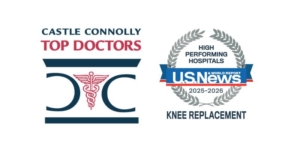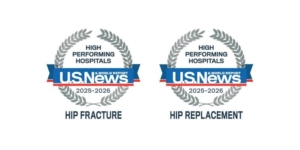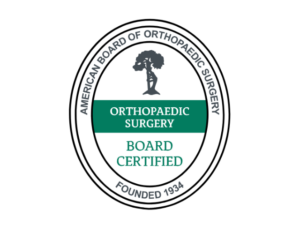Back pain, Scoliosis and Total Hip Replacement, What to Expect
I have scoliosis and a bad hip. Now what?
Many patients who have scoliosis also develop hip arthritis. Performing a total hip in a patient with significant scoliosis often is more difficult with increased potential complications.
Scoliosis refers to a spine which becomes curved and twisted resulting in a “S” or “C” shaped appearance. While there are many causes, the vast majority are “idiopathic”, meaning we don’t know the specific cause. Most scoliosis starts in childhood or adolescence and most of the time it is mild and asymptomatic. Many curves will slowly progress with time. Severe curves can compromise the volume of the chest and abdominal cavities resulting in heart, lung and intestinal problems.
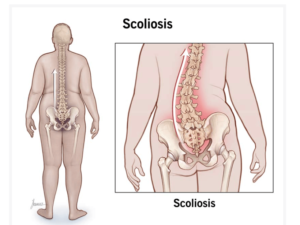
A person with scoliosis may appear to have one shoulder or shoulder blade higher than the other. They often develop a thoracic or rib hump as the ribs follow the rotation of the vertebra. Some also develop a protrusion or bump on one side of their lower back. I recall in my elementary school, a nurse screened all the kids for scoliosis by looking at the contours of our backs while we leaned forward.
When our spine loses its normal “straight” alignment and begins to curve and twist, our body compensates to keep our heads aligned over our buttocks by the pelvis tilting and twisting to accomplish this. If our bodies didn’t do this, we’d fall over. One hip often appears higher or more prominent than the other. This pelvic tilting and twisting results in a “pelvic obliquity” disrupting the optimal relationship between the femoral head and the acetabulum (socket) and results in one hip supporting more of the weight than the other hip. Hip muscles, tendons and supportive structures are stressed unevenly developing contractures. These abnormal forces can lead to hip pain. Abnormal joint loading can lead to arthritis with cartilage breakdown and joint inflammation.
I care for many patients who present with arthritic hip symptoms and who also have lower back arthritis with or without scoliosis. There is a complex natural movement between our lower back and pelvis as we transition through certain postural movements, such as standing from a seated position. As the pelvis flexes or extends, it changes the functional position or orientation of our socket or acetabular. When somebody has a stiff arthritic lumbar spine, this normal complex movement is compromised or often eliminated. After a total hip replacement, this increases the risk of hip dislocation. Their reconstruction is even more complicated when somebody also has scoliosis with a significant pelvic obliquity.
If you have a chronic lower back condition including scoliosis, or have had past lower back surgery, it’s important to share this with your doctor when you are being evaluated for a hip replacement. Your back condition needs to be understood and taken into account when planning and executing your hip surgery. Cup position and even stem orientation often require subtle changes to compensate for the altered position of the pelvis and lack of movement between the lower back and the pelvis after surgery.
I often select a different bearing when I perform a total hip on someone with significant lower back pathology, including scoliosis. The standard bearing used in the vast majority of total hips includes a metal or ceramic ball articulating against a plastic liner supported by a metal cup.
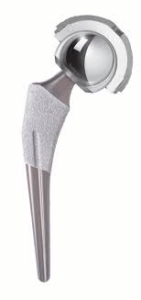
“Standard” Moves in one plane
For this group of patients, I will often choose a bearing that moves in two planes which provides an increased hip range of motion which lessens the chance of a postoperative dislocation.

“Dual Geometry” Moves in two planes
I am very careful before changing body mechanics or leg length when performing a total hip when someone has a pelvic obliquity and underlying scoliosis. I discuss this with my patient before their surgery. If they tell me that one of their legs “appears” longer or shorter than the other leg, but that they don’t feel that difference when they walk or that they don’t modify or build up their shoe, then I am very careful not to significantly change their leg length or acetabular femoral offset. If I lengthen their leg to treat the “appearance” of one leg being longer or shorter, it can result in the operated leg feeling significantly longer and worsen their scoliosis and back pain.
People without significant lower back arthritis are able to compensate for a leg length difference after hip replacement surgery. About 90% of patients in this group who perceive a leg length difference after their surgery, feel both legs equal after 6 months or sooner. Patients with an arthritic stiff spine, especially those with scoliosis with a pelvic obliquity cannot do this.
Frequently patients who undergo hip replacement and have an arthritic painful back experience relief of their back pain after their hip replacement due to improved body mechanics and fluidity of gait.
Patients are reconstructed using the SPAIRE approach. Consistently patients walk just hours after their surgery and are encouraged to move into any position that is comfortable, that is, there are no hip precautions or restrictions. This encourages confidence and clinically I see patients getting well faster. The SPAIRE approach preserves the majority of the short external rotator muscles which anatomically cover the posterior-superior (back and upper) aspect of the hip joint which mechanically blocks against the most common posterior dislocation which is most common. All anatomic structures released to perform the surgery are anatomically repaired including the hip joint capsule. This has proven extremely satisfactory.
If you have significant hip disease which is interfering with your life and not responding to conservative care and also lower back arthritis with or without scoliosis, you may still be an excellent candidate for total hip replacement surgery, but there are increased risks. It is important to discuss your back condition with your doctor before your surgery because certain precautions and modifications to their standard procedure may be necessary. It is wonderful when many of my patients thank me that their back pain also resolved after their hip replacement surgery.
Browse through the hundreds of testimonials. These grateful patients make it all worthwhile.
The Leone Center for Orthopedic Care provides highly personalized, end-to-end orthopedic care for people with hip and knee conditions. Dr. William Leone offers patients the latest, most-promising innovations in joint replacement surgery, in a compassionate, patient-focused setting. He has performed over 15,000 joint surgeries over the course of his career, restoring mobility and improving quality of life for thousands of patients from all over the world.
The Leone Center for Orthopedic Care at Holy Cross Hospital is located at 1000 NE 56th Street in Fort Lauderdale. For more information or to schedule a consultation please call 954-489-4575 or visit holycrossleonecenter.com.

